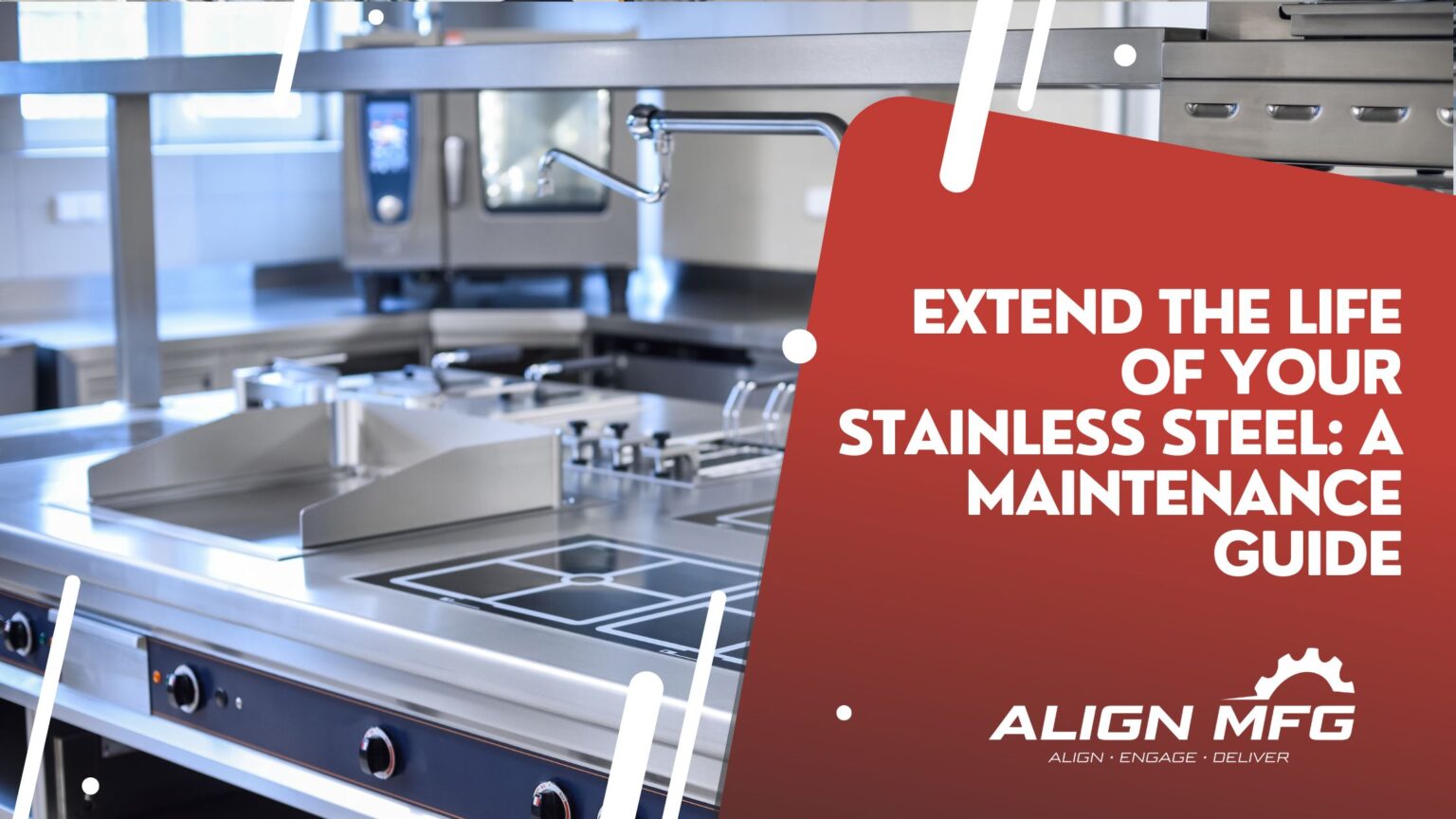
Extend the Life of Your Stainless Steel: A Maintenance Guide
Stainless steel is a versatile and durable material that has become a staple in both industrial and consumer applications. Whether used in kitchen appliances, architectural elements, or medical equipment, the aesthetic appeal and functionality of stainless steel make it a popular choice. However, to preserve its shine and integrity, proper maintenance is essential. .
This guide will explore the best practices for maintaining stainless steel, emphasizing the importance of regular care and the expertise offered by Align Manufacturing, a leading provider of stainless steel products and maintenance solutions.
Stainless steel is an iron alloy with a minimum of 10.5% chromium content by mass. This chromium forms a passive layer of chromium oxide on the surface, which prevents further surface corrosion and blocks corrosion from spreading into the metal’s internal structure. While stainless steel is known for its resistance to rust, it can still accumulate dirt, grime, and even undergo corrosion if not properly maintained.
| Type | Composition | Key Properties | Common Applications |
| 304 | 18% Cr, 8% Ni | Excellent corrosion resistance; good formability and weldability; non-magnetic | Kitchen equipment, chemical processing, architectural applications |
| 316 | 16% Cr, 10% Ni, 2% Mo | Superior corrosion resistance, especially against chlorides and marine environments; non-magnetic | Marine equipment, medical devices, chemical processing |
| 409 | 11% Cr | Good corrosion resistance; high-temperature tolerance; magnetic | Automotive exhaust systems, heat exchangers |
| 430 | 17% Cr | Good corrosion resistance; formability; magnetic | Appliance trims, kitchen utensils, decorative applications |
| 440C | 17% Cr, 1.1% C | High hardness and wear resistance; moderate corrosion resistance; magnetic | Cutting tools, bearings, surgical instruments |
Cr = Chromium, Ni = Nickel, Mo = Molybdenum, C = Carbon
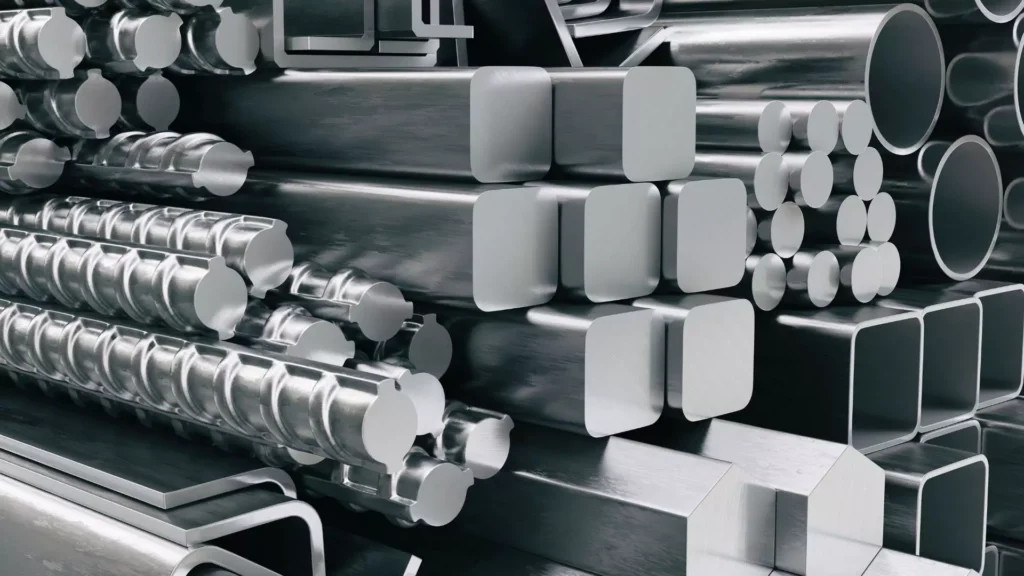
Types of Corrosion
Galvanic Corrosion:
- Galvanic corrosion occurs when two dissimilar metals are in electrical contact in the presence of an electrolyte (like saltwater or even just moisture).
- The more active metal (the anode) corrodes while the less active metal (the cathode) is protected.
Key Tip
Common Combinations to Avoid:
- Stainless Steel and Copper: Copper is more noble than many stainless steels, leading to accelerated corrosion of the stainless steel.
- Stainless Steel and Brass: Brass, containing copper, can also induce galvanic corrosion in stainless steel.
- Stainless Steel and Lead: Lead is more anodic than many stainless steels, increasing the risk of corrosion.
- Stainless Steel and Zinc: While zinc is often used for sacrificial protection, direct contact with certain stainless steels can lead to localized corrosion.
Minimizing Galvanic Corrosion:
- Isolate Dissimilar Metals: Whenever possible, physically separate dissimilar metals using insulating materials like plastic washers, gaskets, or coatings.
- Select Compatible Metals: Choose metals that are close together in the galvanic series to minimize the potential for significant galvanic corrosion.
- Consider Sacrificial Anodes: In some applications, using a more active metal (like zinc) as a sacrificial anode can protect the stainless steel from corrosion.
Design for Drainage: Ensure proper drainage to minimize the accumulation of moisture and electrolytes.
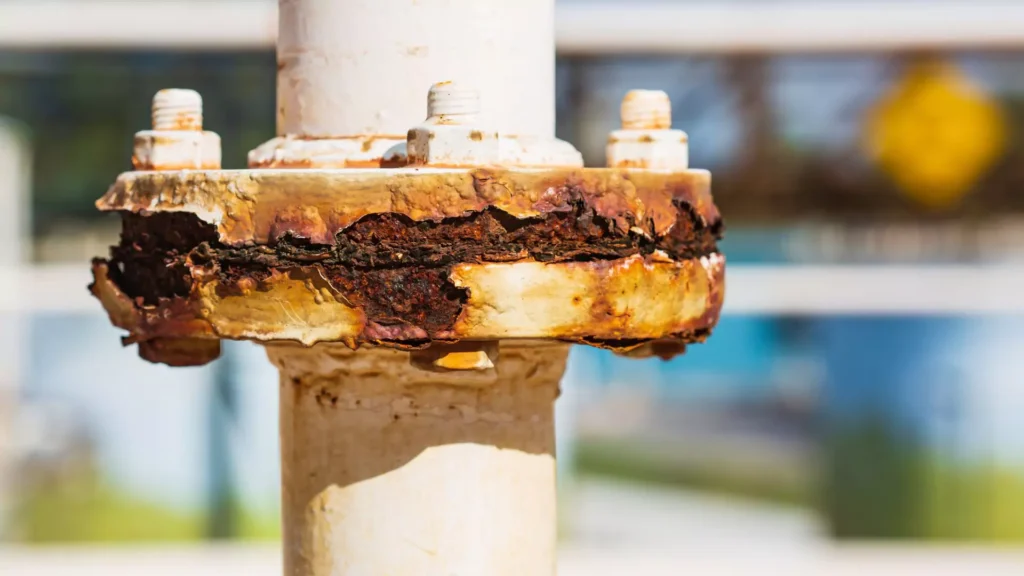
Crevice Corrosion:
- Crevice corrosion happens in confined spaces where moisture can become trapped.
- The trapped moisture becomes stagnant and oxygen-depleted, creating an environment where corrosion can thrive.
- Common locations:
- Under gaskets, washers, and fasteners
- Inside joints and seams
- Beneath stacked materials
- Prevention:
- Ensure proper drainage to prevent water accumulation.
- Regularly clean and inspect crevices.
- Use non-absorbent materials for gaskets and seals.
Pitting Corrosion:
- Pitting corrosion is characterized by the formation of small, localized pits or holes in the metal surface.
- It often occurs in the presence of chlorides (like saltwater) and acidic environments.
- Identification:
- Look for small, often inconspicuous, pits or holes in the surface.
- Prevention:
- Regularly clean and rinse the surface to remove chlorides and other contaminants.
- Use corrosion inhibitors in environments with high chloride concentrations.
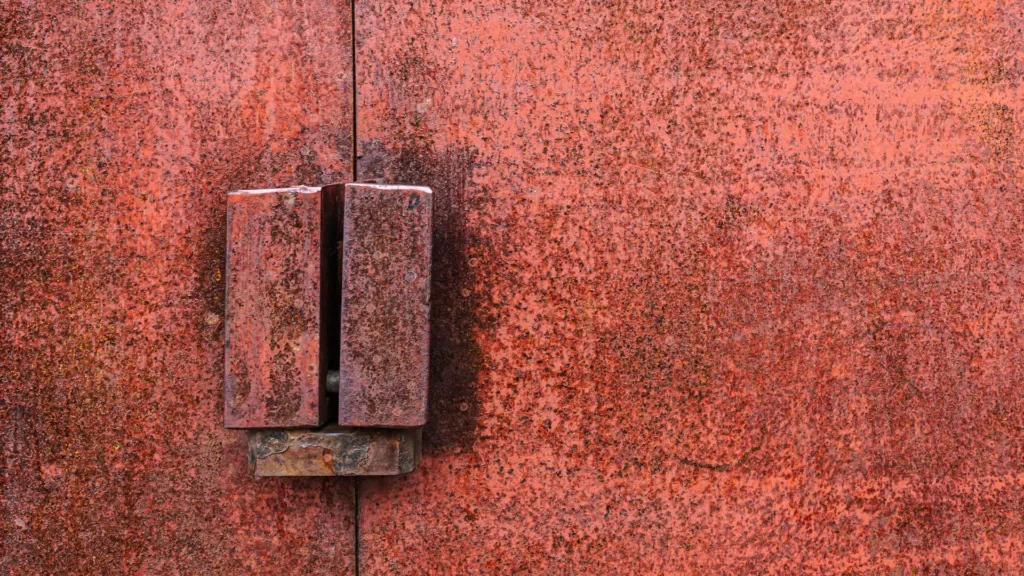
Environmental Factors
- Humidity: High humidity increases the rate of corrosion by providing a constant source of moisture.
- Pollution: Industrial pollutants and airborne contaminants, such as sulfur dioxide and nitrogen oxides, can accelerate corrosion.
- Temperature Fluctuations: Rapid temperature changes can cause thermal stresses in the metal, leading to the formation of microcracks that can accelerate corrosion.
Chlorides, such as salt from de-icing chemicals or seawater, can break down stainless steel’s passive layer, accelerating corrosion. Acids and harsh chemicals also pose risks by stripping away the protective film. To maintain stainless steel’s integrity, avoid cleaners with chlorides, rinse surfaces regularly, and neutralize chemical residues promptly.
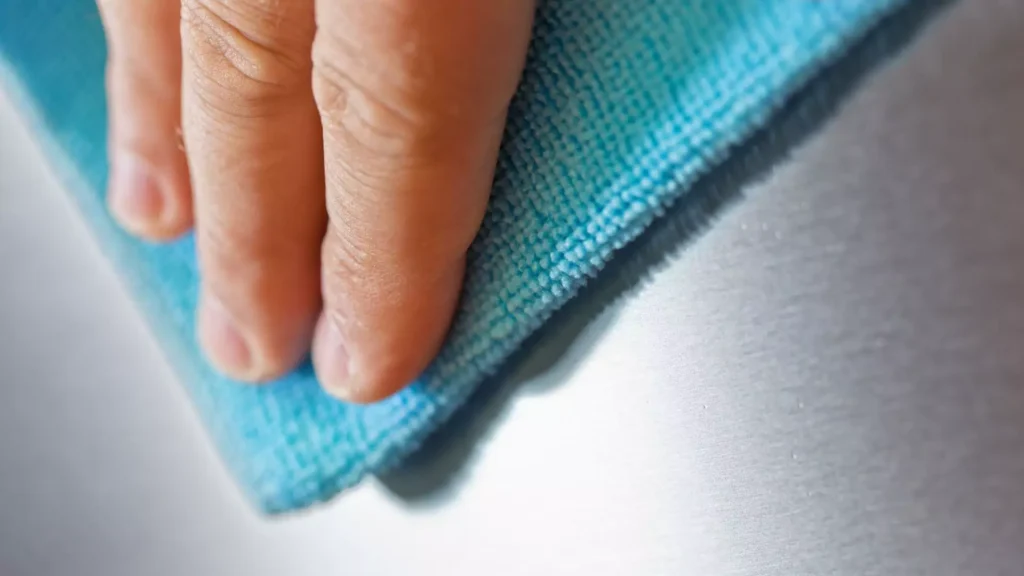
Effective Cleaners for Stainless Steel in Manufacturing
- E-NOX CLEAN
- A specialized cleaner for removing corrosion, stains, and surface contaminants from stainless steel. It is particularly effective for light corrosion caused by environmental factors.
- WD-40 Specialist Cleaner
- A multi-purpose cleaner that provides lubrication and corrosion protection. Commonly used to clean and protect stainless steel surfaces while adding a protective layer.
- Bar Keepers Friend
- A non-abrasive cleaner that effectively removes tough stains, grease, and mild corrosion from stainless steel.
- Sheila Shine
- A stainless steel polish and cleaner that restores shine while protecting against corrosion and fingerprints.
- 3M Stainless Steel Cleaner and Polish
- Designed to clean, polish, and protect stainless steel in one step. It prevents dirt and corrosion buildup.
- Simple Green Pro HD
- A heavy-duty degreaser and cleaner, effective on stainless steel machinery and equipment without causing damage to the surface.
- ZEP Stainless Steel Cleaner
- Formulated for industrial use to remove grease, grime, and stains, while protecting against corrosion.
- Blue Magic Metal Polish Cream
- Effective for restoring and maintaining stainless steel surfaces, particularly those exposed to harsh conditions.
- Flitz Stainless Steel Cleaner
- A biodegradable cleaner that removes oxidation and protects stainless steel surfaces from further corrosion.
- Stellar Solutions CitriSurf 77
- A citric acid-based passivation cleaner that enhances the formation of the chromium oxide layer, preventing corrosion on stainless steel surfaces.
Avoiding Installation Damage
Improper installation can compromise stainless steel’s protective layer.
Stainless steel is an alloy of carbon, iron, and chromium, designed for durability and rust resistance. During manufacturing, processes like polishing and passivation help form a thin chromium oxide layer. This “passive film” acts as a protective barrier, shielding the metal from rust. Remarkably, if this layer is scratched, it self-heals by regenerating when exposed to air, ensuring long-lasting protection
For example, using steel tools on stainless steel can deposit ferrous particles that interfere with the formation of the chromium oxide layer. Even minor scratches from screwdrivers or abrasions from iron equipment can dilute chromium at the surface, leading to rust. Post-installation cleaning is crucial to remove any contaminants and restore balance to the surface chemistry.
Polishing Stainless Steel
For that extra shine, you can polish stainless steel with products designed specifically for this purpose. Remember to polish in the direction of the grain and use a clean, soft cloth for application.
Outdoor Stainless Steel Maintenance
Outdoor stainless steel items are exposed to harsher conditions:
- Frequent Cleaning: Clean outdoor stainless steel more frequently to combat exposure to the elements.
- Protective Coatings: Consider applying a protective coating to outdoor stainless steel to guard against environmental damage.
- Inspection and Repair: Regularly inspect outdoor items for signs of rust or corrosion and address them promptly.
Outdoor stainless steel faces harsher conditions, such as salt, pollutants, and weather fluctuations, which can accelerate corrosion. Regular maintenance includes rinsing surfaces after rain or snow, inspecting for rust or staining, and applying protective coatings to enhance resistance. Adjust your cleaning schedule based on environmental stress—e.g., quarterly for high-salt areas or during seasons with heavy use of de-icing chemicals.
Key Tip: Conduct regular inspections, at least monthly, to identify any signs of corrosion, such as:
- Discoloration
- Rust spots
- Pits
- Cracks
- Staining
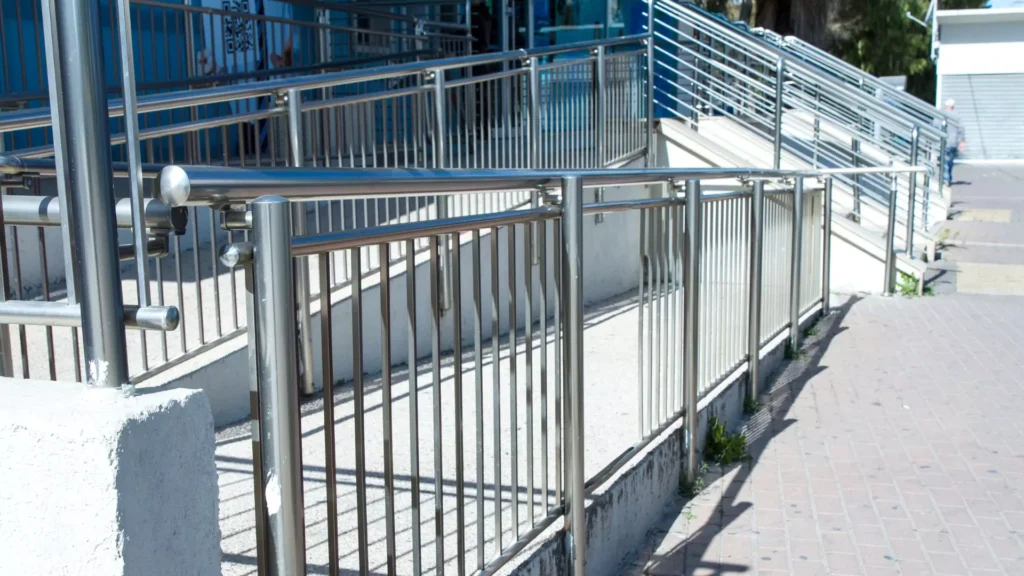
Conclusion
For more information on stainless steel maintenance, contact Align Manufacturing .Whether it’s addressing minor corrosion or maintaining large-scale installations, Align Manufacturing offers the tools and knowledge needed to preserve stainless steel’s shine and strength.
Here’s a concise table summarizing various types of stainless steel, highlighting their key properties and common applications:
For more on how to extend the lifespan of your stainless steel check out our guide here.

